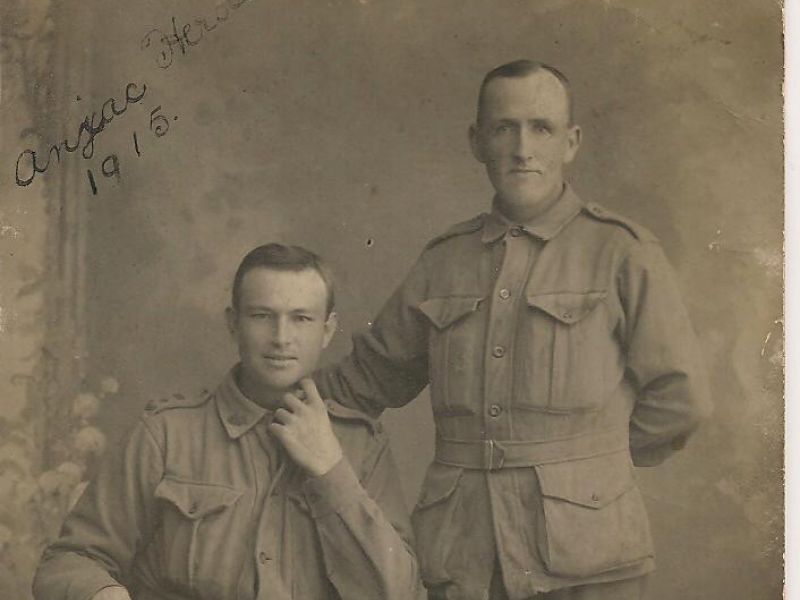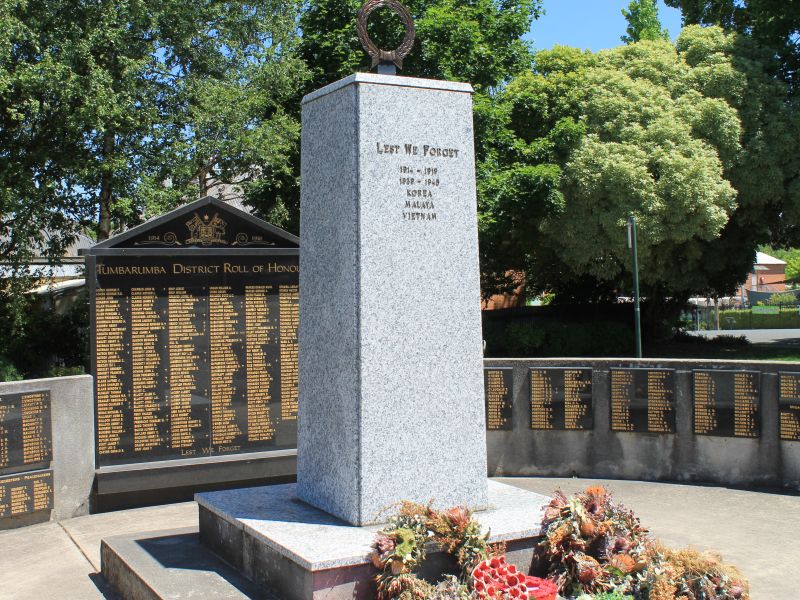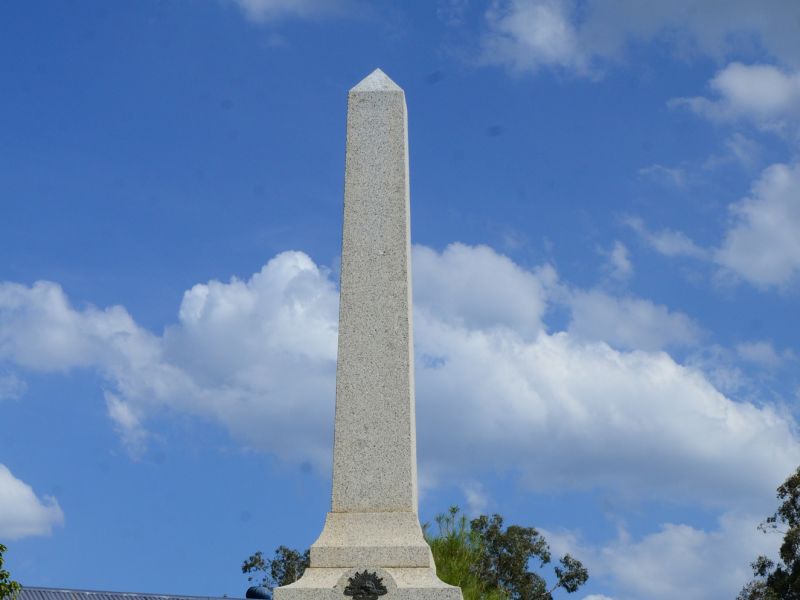Clifford Cardiss Thwaites
Clifford (on left in photograph) was born on the 16th of December 1893 at 81 Toogood Street in Erskinville NSW. He would be the youngest child of William Johnson and Mary Ann (née Cardiss). Clifford’s older siblings were George Bright, William Johnson and Myrtle Ada.
Clifford fathers initial surname was Waites but, for some unknown reason, changed it to Thwaites when in his early teens and just after his father had passed away in 1869. Mary was William’s second wife, his first, Jane Elizabeth Lister, having died only three years after they had married. In 1882, William married Mary and they moved out to Australia in 1884.
It is noted on Clifford’s attestation papers that he was apprenticed for five years to Tiley and Deaton Coorporation Building, Hay St in Haymarket, NSW but only served for 18 months on account of ill health. Nothing is mentioned as to what caused his ill health.
Clifford enlisted on the 30th of April 1915 at Liverpool in NSW. He was assigned the Regimental Number 2242 and placed into the 6th Reinforcements for the 13th Battalion. This battalion were part of the 4th Infantry Brigade of the 4th Infantry Division. The reinforcements departed Melbourne on HMAT A62 Wandilla on the 7th of June 1915. The War Diary of the 13th Battalion for the 2nd of August reads; “1 Officer and 136 o’Ranks of 6th reinf. Men of good stamp. 6 weeks training, 1 week Egypt”.
Clifford had arrived on Gallipoli when the battalion was stationed at Reserve Gully. Four days later he, and the rest of the battalion, moved up to No. 3 Post at Australia Gully. They were entrenched on the right of 5th Wiltshire Rifles with the 14th Battalion AIF on their right. That night an attack further up the line drove a party of Turks into their position. They managed to capture two officers and 16 other ranks. The following night, while the 14th, 15th and 16th Battalions made an attack on Abdel Rahman Blair, the 13th plus one battalion of the Kings Own Royal Lancashires held the line. The Australian attack failed. The 13th had 11 killed and 21 wounded. For the remainder of August the battalion held the line at No. 3 Post but continued to suffer heavy casualties.
On the 26th of August 1915 Clifford was taken to the 4th Field Ambulance at Walden Grove suffering from gastro enteritis. He remained there for some time. He returned to his battalion after they had been taken off Gallipoli and moved to the Isle of Mudros. Christmas on Mudros was celebrated with a campfire concert on Christmas Eve and the distribution of Christmas billies on Christmas Day. The last of the battalion embarked on HT Tunisian, arriving at Alexandria on the second day of the new year. On the following day they went into camp with the remainder of their Brigade opposite the Ismailia Railway Station.
On the 23rd of January Clifford went AWOL (Absent without leave) for a period of six days. It’s not known whether he was apprehended by the Military Police or whether he came back on his own account. He was awarded 14 days No. 2 Field Punishment and forfeited six days pay. No. 2 Field Punishment consisted of heavy labouring duties, possibly being restrained in handcuffs or fetters.
February and March were quite busy for Clifford. Not only was there training and other duties to perform but on the 12th of February he was admitted to the 1st Auxilliary Hospital at Heliopolis with bunions but then transferred to the 3rd Australian General Hospital. He would remain here until the 20th of March when he rejoined his battalion. Almost a week later, on the 26th, the 13th Battalion commenced the march from their current location at Tel-el-Kebir Egypt, to their new camp at Serapeum Egypt, a distance of over 40 km. The journey took three days, with two of those travelling over very heavy sand.
One of the regular pastimes of soldiers billeted near the Suez Canal was to swim. It was one way of cooling down from the hot and dusty conditions. Often, soldiers would line the bank even as troopships passed along the canal, as shown in the photograph. In April the maximum temperatures would have been around the low to mid 30s. On the 11th of April Clifford was swimming in the canal with a group of mates when tragedy struck.
The Red Cross Report from the 3rd Australian General Hospital gives the circumstances which resulted in Clifford’s death.
“He was driving in canal on Sunday previous to 11th into shallow water, when he fractured his spine high up, causing complete paralysis in the lower extremities, and also loss of sensation in limbs. He died on the morning of the 12th, 4:50. The case was quite hopeless from the beginning. He was buried in Old Cairo Cemetery, Military Side. Grave No. F. 31
Chaplain: Rev. Captn. Makeham, C.F. C.E.
F.B.Leney
3rd A.G.H.
Cairo
6.6.16”
Clifford is remembered on the Australian War Memorial Roll of Honour, The Corryong War Memorial and the Tumbarumba District Roll of Honour WW1. For his service, he was awarded the 1914-1915 Star, the British War Medal and the Victory Medal.

 Stephen Learmonth
Stephen Learmonth
